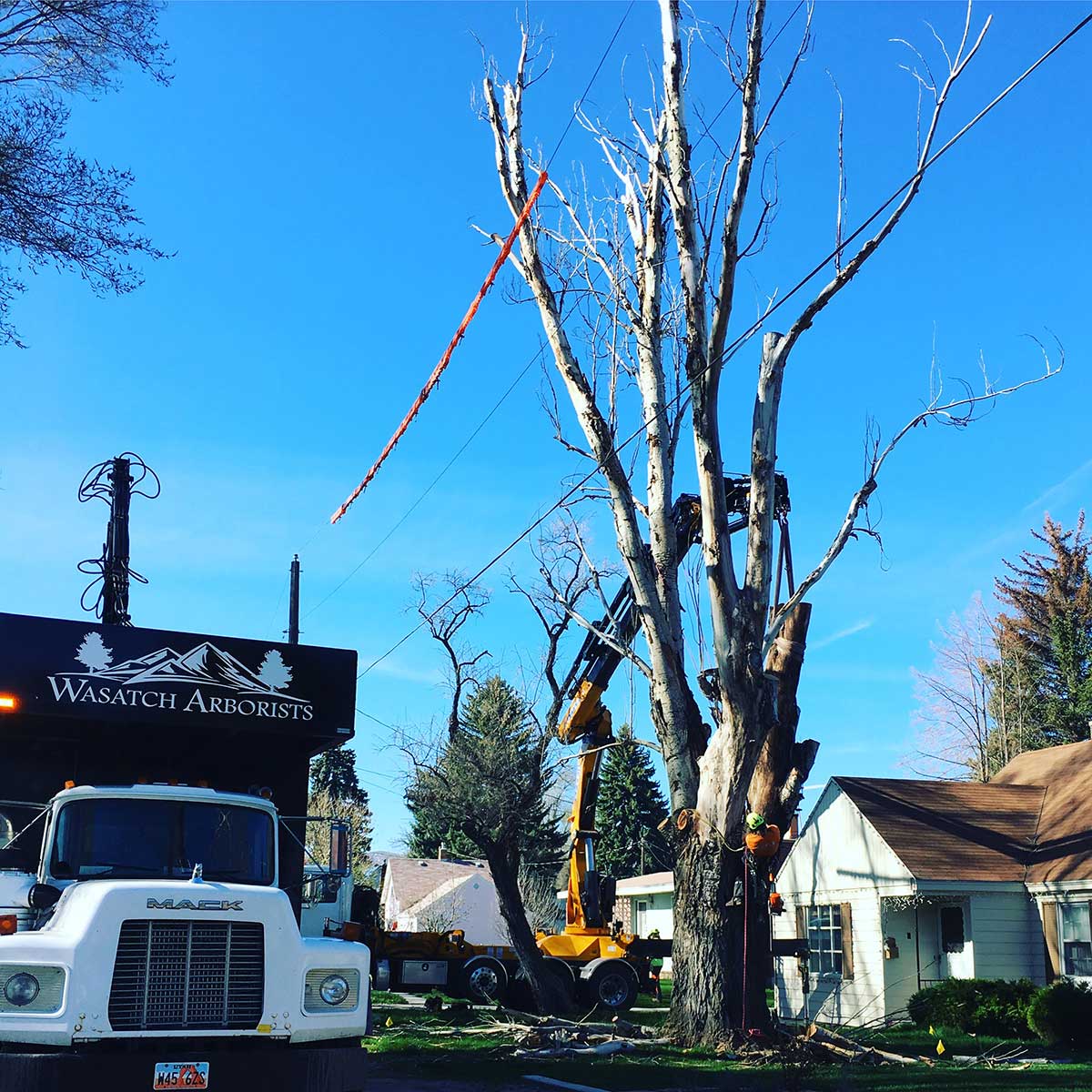
While preserving and saving trees is the first (and preferred) choice for any ISA Certified Arborist, there are times when saving a tree is just not an option. When considering tree removal, arborists weigh the health of the tree, the threat to people and property, tree removal cost versus potential liability and a whole host of other factors before deciding on removal.
As professional tree-huggers, arborists will do whatever they can to save a tree… but they also know when it’s time to hug a tree good-bye.
If you have a tree exhibiting any of the following signs or symptoms, contact a local ISA Certified Arborist for a tree assessment.
Signs That You Need an Arborist
The tree is dead.
While this may seem obvious, dead trees are a hazard to your property and the safety of others. Professional tree removal is recommended for any sized dead tree that is threatening the security of structures, utility lines or people.
The tree is sick.
Is the top of the tree or branches dying back? Are the leaves yellowing or browning? Is the trunk showing signs of decay or is the bark peeling? All of these are signs of an unhealthy (and unhappy) tree that may require tree removal.
The tree is damaged.
If your tree was severely damaged by a storm, animal or other event, it may require removal. Common in Utah, deer or moose can severely harm a tree by rubbing their antlers against its trunk. While some damage can be mitigated, trees can be damaged beyond repair.
The tree or its roots are encroaching on a structure or utility lines.
Depending on the tree and its location, tree limb removal or tree root removal may be an alternative to tree removal. An ISA Certified Arborist will be able to determine if a tree can be saved without further threat to structures or utility lines.
The tree is leaning in a dangerous direction.
Trees that lean towards or over driveways, decks, children’s play areas or your home can be a potential hazard. While tree lean can be benign, a professional assessment is recommended for safety purposes.
The tree has structural defects.
Structural defects may include bark inclusions, clustered branches, codominant stems, cracks, a hollow trunk, trunk bends, over-extended limbs and up-sweeping branches. While some of these defects are easy to detect, others require professional assessment.
The tree was improperly planted.
If a tree was planted in the burlap or wire basket it was transported in, or if the staked supports were never removed and the tree grew into the stake string, the tree may not survive. If the planting mistakes cannot be mitigated or fixed, the tree will require removal.
The tree is too large for its location.
Sometimes trees simply outgrow their location. If possible, an arborist will recommend moving the tree to a better location on your property in lieu of a complete tree removal.
The tree is infected or diseased.
A tree infection or disease will eventually cause tree death and may spread to other trees. Common tree infections and diseases, such as oystershell scale, tip weevils and bark beetles, can kill a tree and continue to spread. Professional treatment can help save a tree from death and removal, and help stop the further spread of disease.
Tree removal can be unpredictably dangerous. If you think you have a tree that requires removal, best to leave it to the professionals. Save yourself the time, money and a potentially hazardous tree removal situation and call a local ISA Certified Arborist today.




